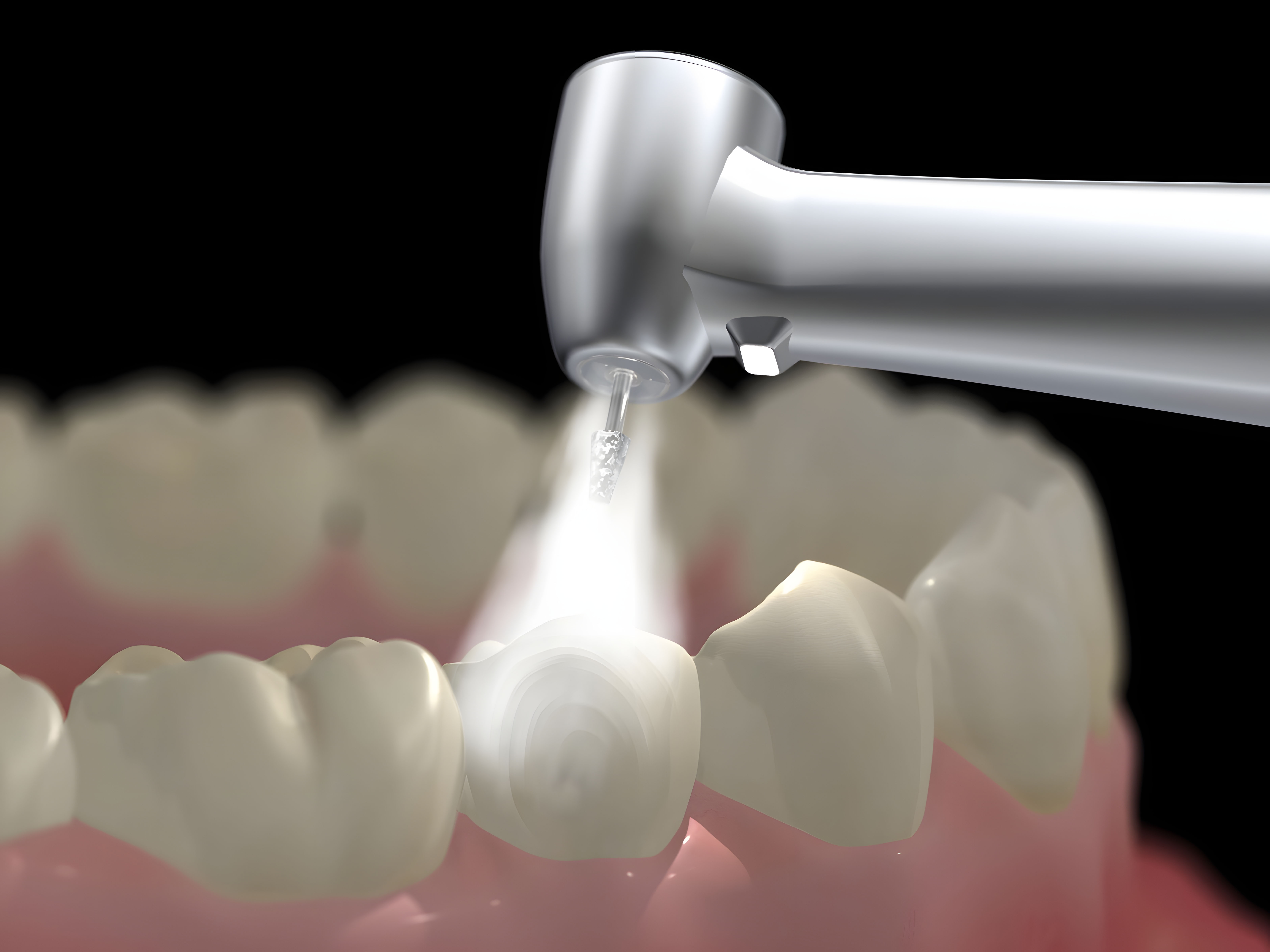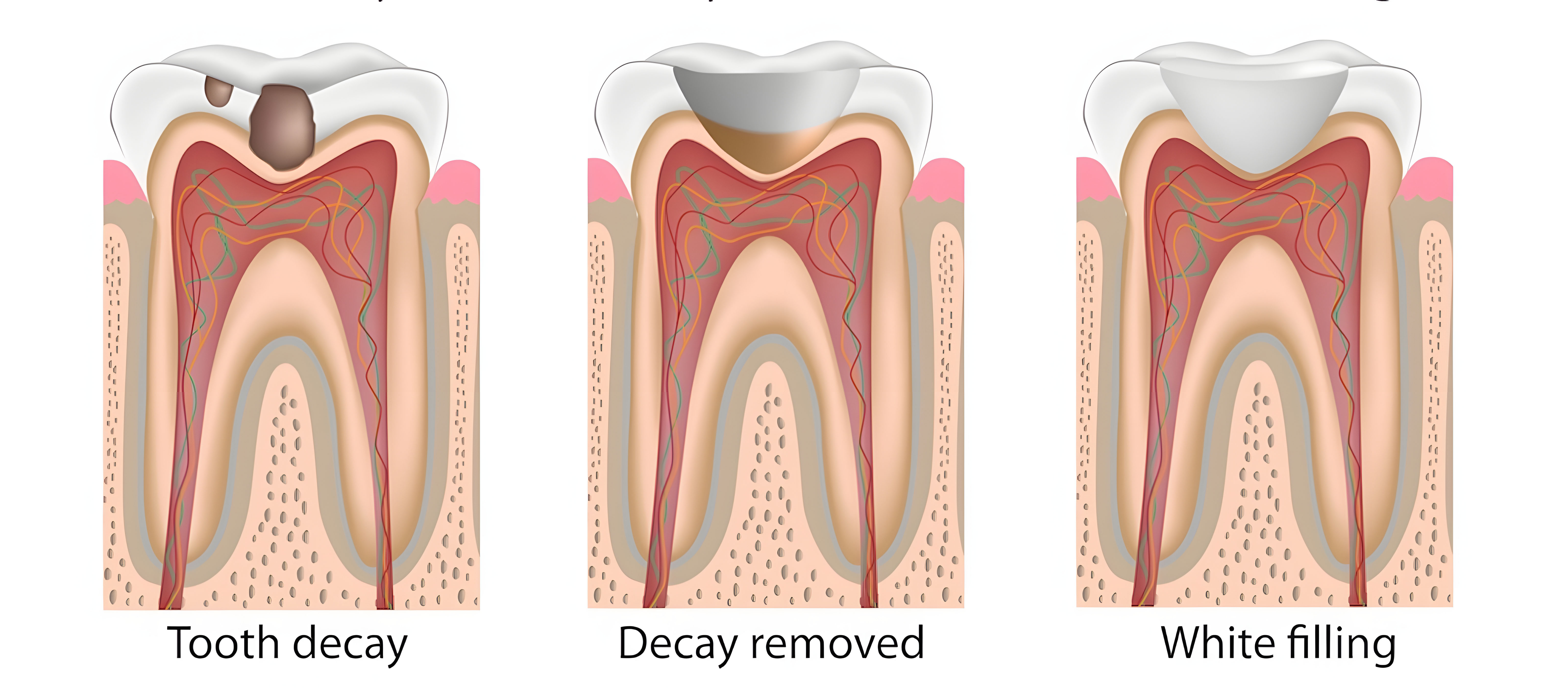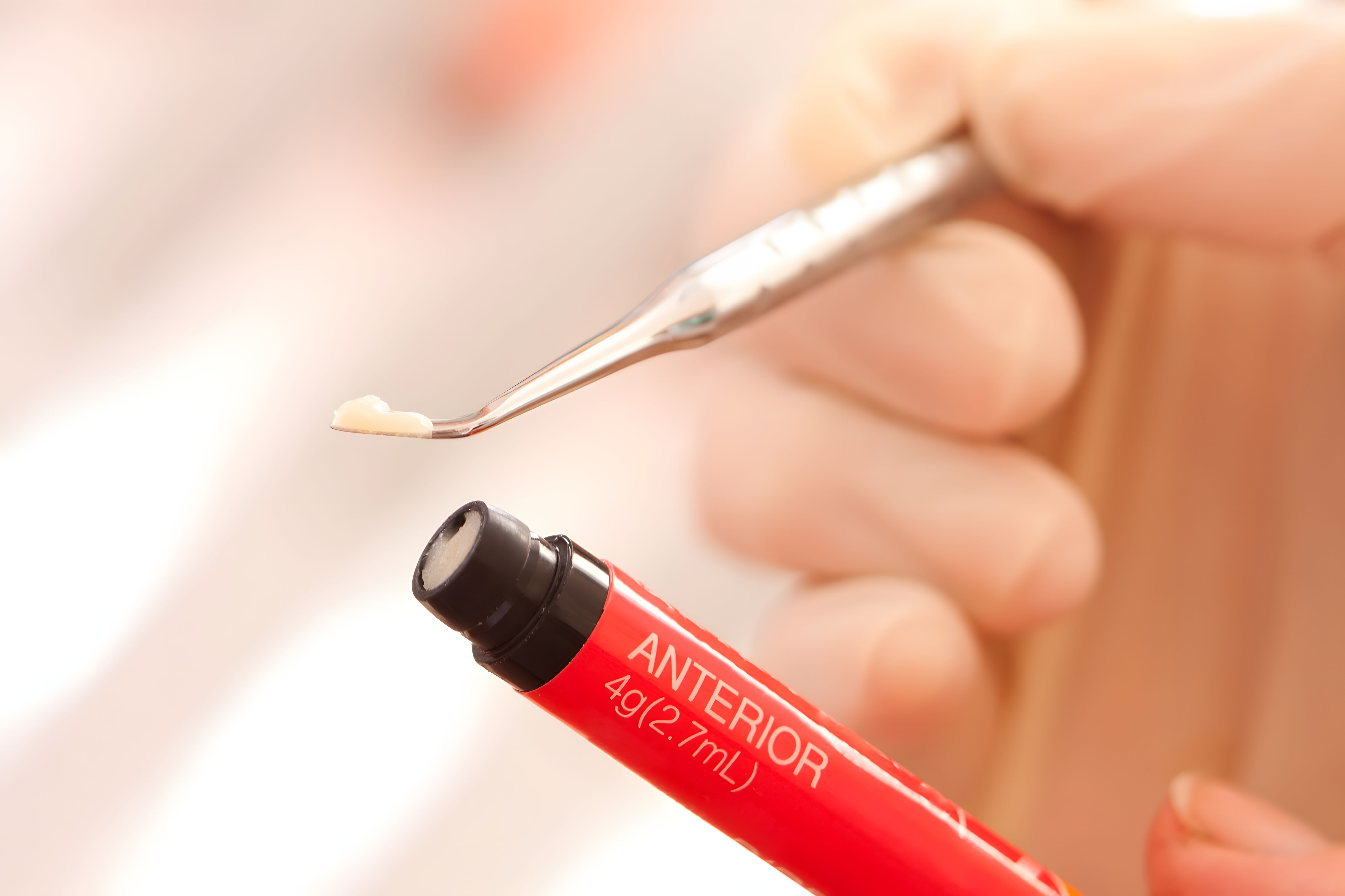
Een uitgebreide gids voor composietvullingen

WAT ZIJN COMPOSIETVULLINGEN?
Composietvullingen zijn een tandheelkundig vulmateriaal dat bestaat uit een mix van kunststof en glaskorrels. Ze worden gebruikt om tanden te herstellen die beschadigd zijn door cariës, scheuren of breuken. Composiet is tandkleurig en gaat daardoor onopvallend op in de natuurlijke tandkleur een esthetisch voordeel ten opzichte van amalgaamvullingen.

VOORDELEN VAN COMPOSIETVULLINGEN
Composietvullingen bieden meerdere voordelen ten opzichte van traditionele amalgaamvullingen. Ze zijn vooral esthetischer omdat de kleur kan worden afgestemd op uw eigen tanden. Daarnaast hoeft er minder gezonde tandstructuur te worden weggenomen, zodat meer natuurlijk weefsel behouden blijft. Composiet reageert ook minder gevoelig op temperatuurwisselingen, wat bij amalgaam storend kan zijn.
SOORTEN COMPOSIETVULLINGEN
DIRECT
Directe composietvullingen worden in één afspraak aangebracht en ter plekke met een speciale lamp uitgehard.
INDIRECT
Indirecte composietvullingen worden in een tandtechnisch laboratorium vervaardigd en tijdens een vervolgafspraak op de tand gelijmd. Ze worden vaak toegepast bij grotere defecten of om uitgesproken esthetische onvolkomenheden te corrigeren.
VERLOOP VAN EEN COMPOSIETVULLING
De werkwijze lijkt op die van een amalgaamvulling. Eerst verwijdert de tandarts het aangetaste of beschadigde tandweefsel. Daarna wordt een hechtlaag aangebracht en het composiet in dunne lagen ingebracht. Elke laag wordt met een lamp uitgehard. Tot slot wordt de vulling anatomisch gevormd en gepolijst zodat ze naadloos aansluit bij de natuurlijke tandcontour.
NAZORG NA COMPOSIETVULLINGEN
Na plaatsing kunt u enkele dagen wat gevoeligheid voor warmte of koude ervaren. Desensibiliserende tandpasta of mondspoeling kan helpen. Houd bovendien een goede mondhygiëne aan met regelmatig poetsen en flossen om nieuwe cariës te voorkomen.
CONCLUSIE
Composietvullingen zijn een uitstekend alternatief voor amalgaam. Ze scoren hoog op esthetiek en sparen gezonde tandstructuur. Ondanks enkele mogelijke nadelen wegen de voordelen doorgaans zwaarder, waardoor composiet een populaire keuze is voor restauraties. Bespreek met uw tandarts of een composietvulling in uw situatie passend is.
Frequently Asked Questions (FAQs)
What are Composite Fillings?
Composite fillings are a mixture of glass or quartz filler, resin, and a curing light that creates a tooth-coloured material for repairing cavities, chips, and cracks in teeth.
What are the benefits of Composite Fillings?
The benefits of composite fillings include: they are aesthetically pleasing, durable, safe, and versatile.
Are there different types of Composite Fillings?
Yes, there are two types of composite fillings: Direct and Indirect.
How is the procedure for Composite Fillings performed?
The procedure for composite fillings includes preparation, bonding, and polishing. The dentist numbs the affected area, prepares the tooth, applies the composite material in layers and cures it using a special light, and finally shapes and polishes the filling to match the tooth's contours.
Are Composite Fillings safe?
Yes, composite fillings are safe as they do not contain any mercury, making them a non-toxic option for dental restoration.
How do composite fillings compare to traditional silver amalgam fillings?
Composite fillings are more aesthetically pleasing and blend in with the natural colour of the tooth, while traditional silver amalgam fillings are noticeable silver-coloured spots in the mouth. Additionally, composite fillings are safe and do not contain any mercury, while traditional silver amalgam fillings contain mercury.
Is the procedure for composite fillings painful?
The procedure for composite fillings is generally not painful as the dentist will numb the affected area with a local anaesthetic.
How long does the procedure for composite fillings take?
The length of the procedure for composite fillings depends on the size and location of the filling, but typically it takes between 30 minutes to an hour.
How long do composite fillings last?
Composite fillings typically last between 5 to 7 years with proper oral hygiene and regular dental check-ups.
Can composite fillings be used for cavities in the front teeth?
Yes, composite fillings can be used for cavities in both front and back teeth.
Can composite fillings be used for more than just cavities?
Yes, composite fillings can be used to repair not just cavities, but also chips, cracks, and other cosmetic imperfections in your teeth.
Are composite fillings as durable as traditional silver amalgam fillings?
Yes, composite fillings are made to withstand the daily wear and tear of biting, chewing, and speaking.
Can composite fillings be used for children?
Yes, composite fillings can be used for children, but it is important to consult with a pediatric dentist to determine the best option.
Can composite fillings be used for people with metal allergies?
Yes, composite fillings are a safe option for people with metal allergies as they do not contain any metal components.
Can composite fillings be used in place of a crown?
In some cases, composite fillings can be used in place of a crown for small or minor dental restorations. However, for larger or more extensive repairs, a crown may be necessary. It is important to consult with a dentist to determine the best option.
Can composite fillings be used to repair all types of dental problems?
Composite fillings are a versatile solution that can be used to repair a wide range of dental problems, including cavities, chips, cracks, and other cosmetic imperfections. However, they may not be suitable for larger or more complex restorations, in which case other treatments such as dental crowns or bridges may be recommended.
Do composite fillings require special care or maintenance?
To ensure the longevity of your composite fillings, maintain good oral hygiene: brush twice daily, floss daily, and visit your dentist for regular check-ups and cleanings. Avoid habits such as nail biting, chewing ice, or teeth grinding to reduce the risk of damage.









